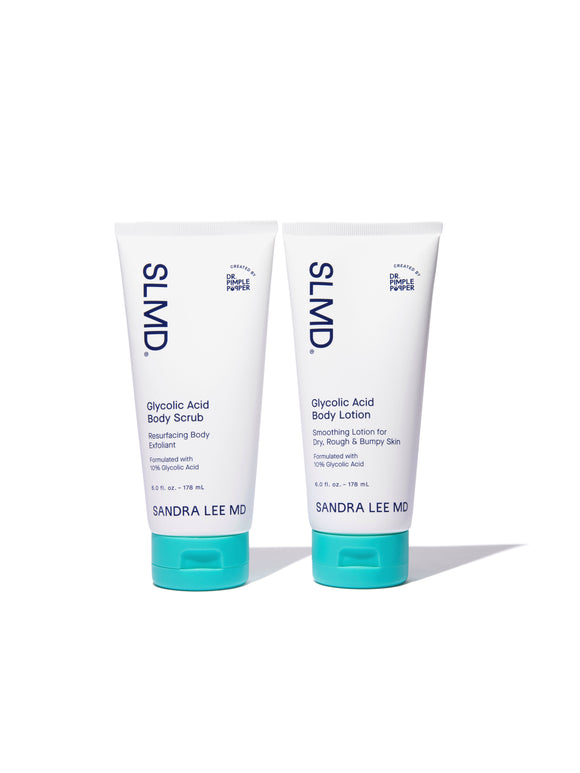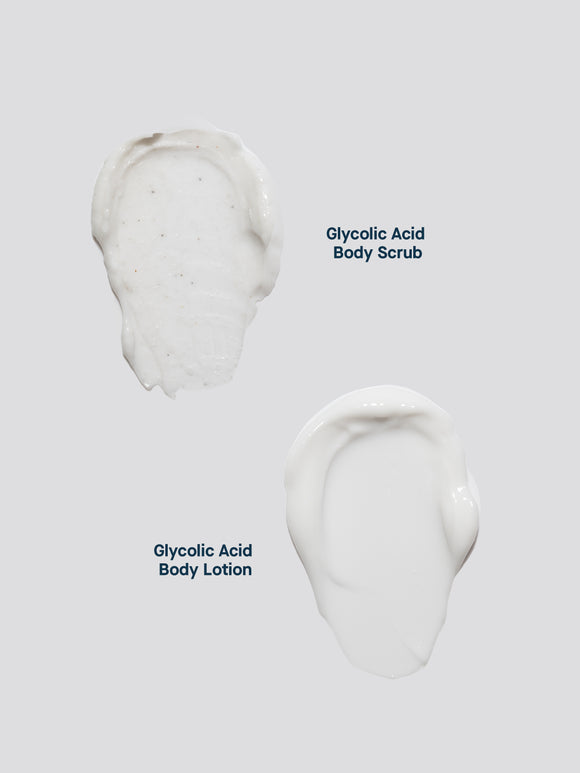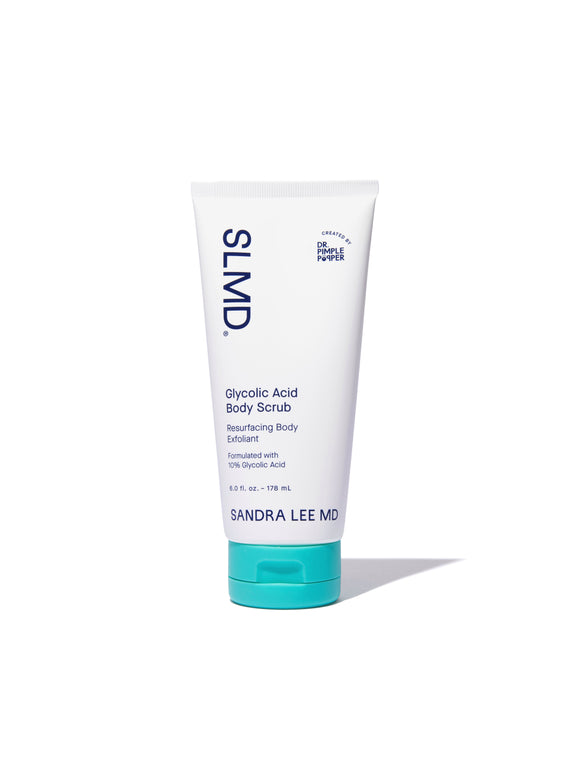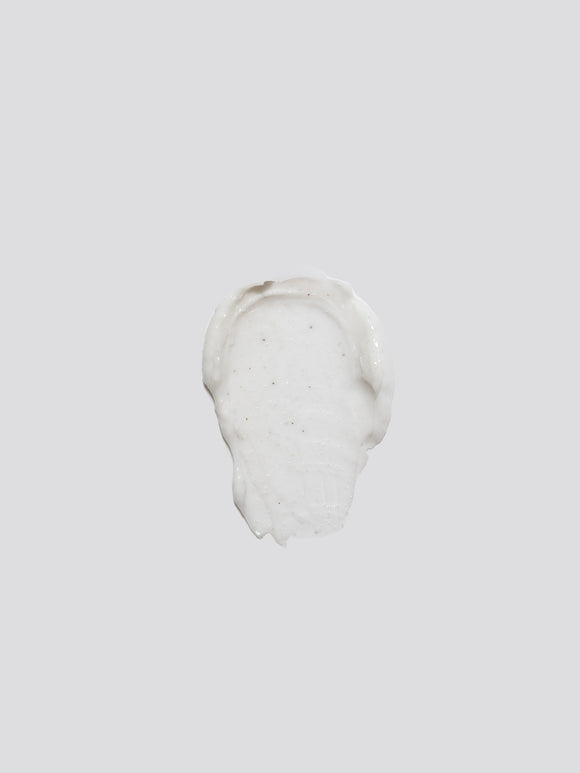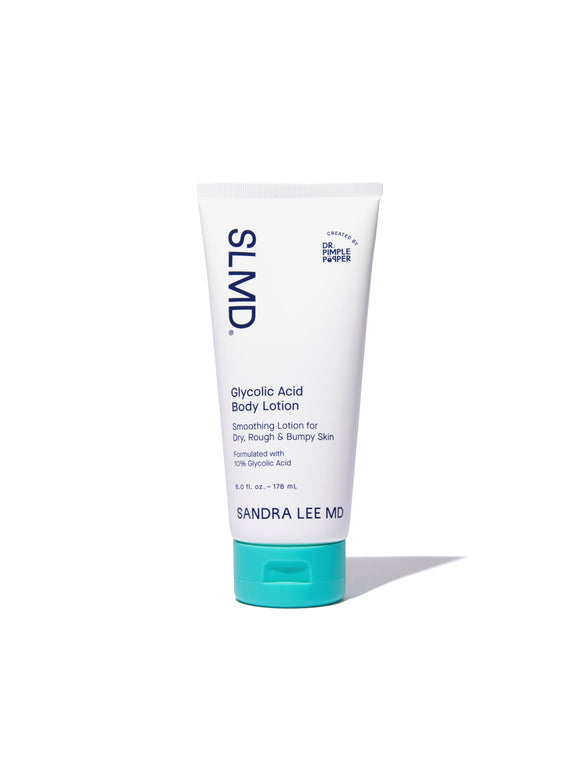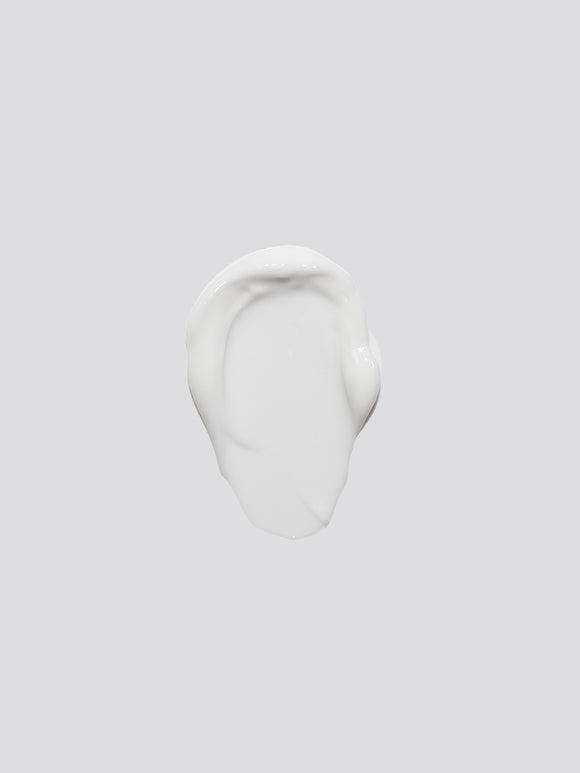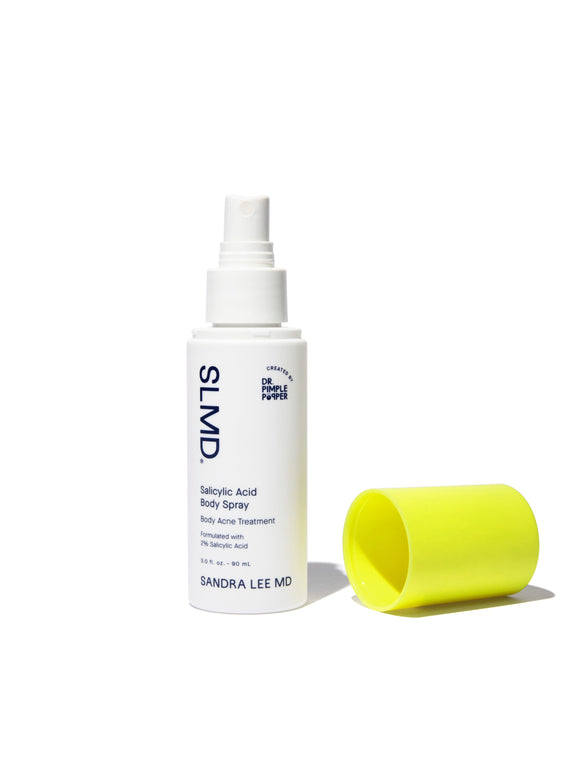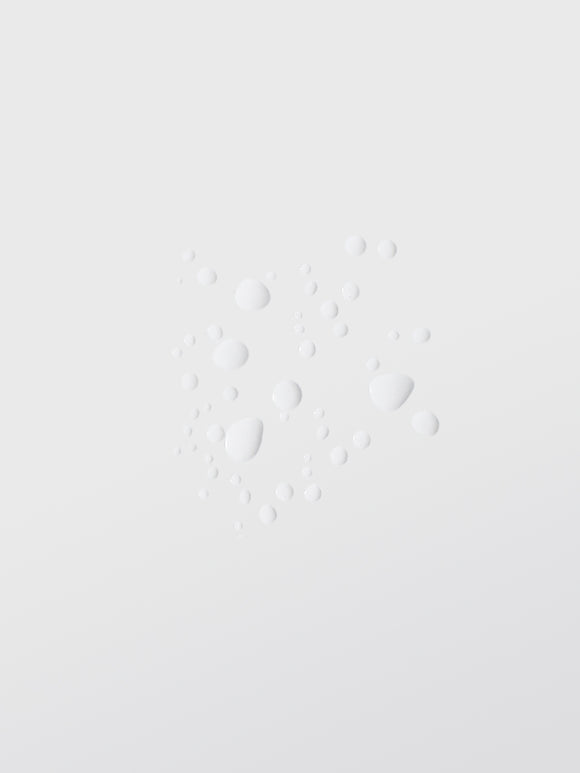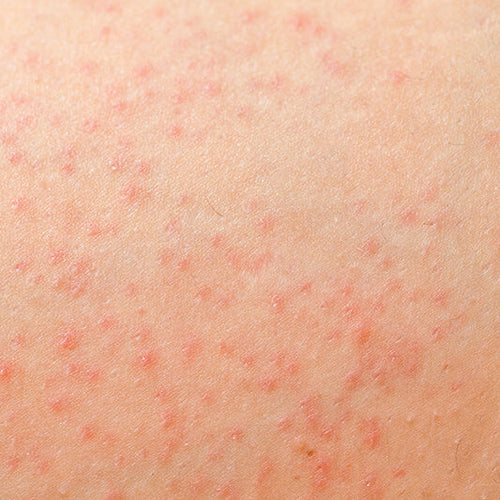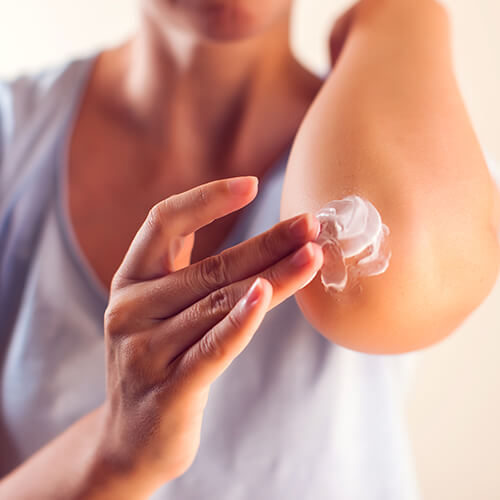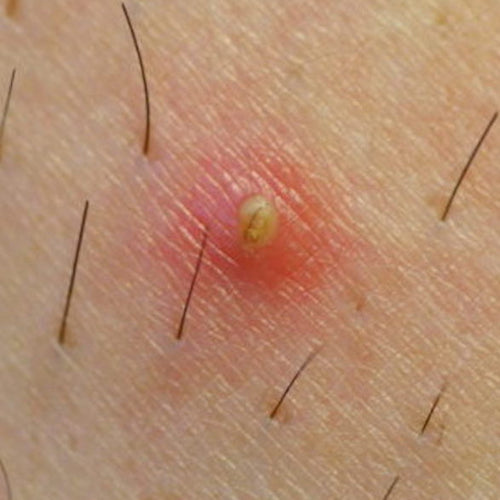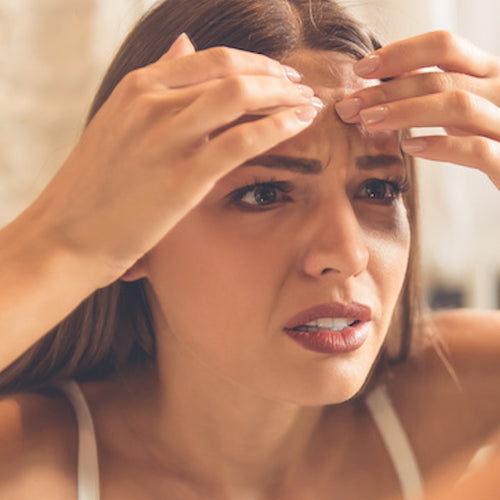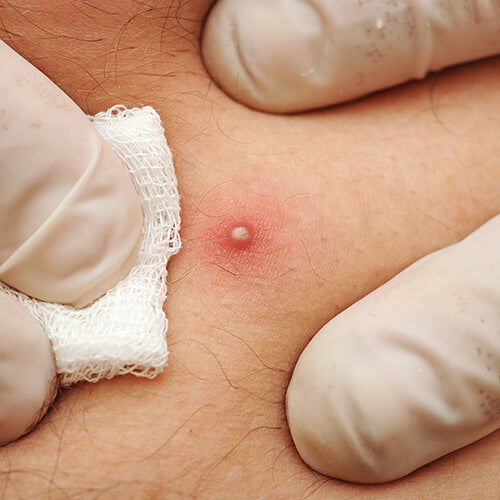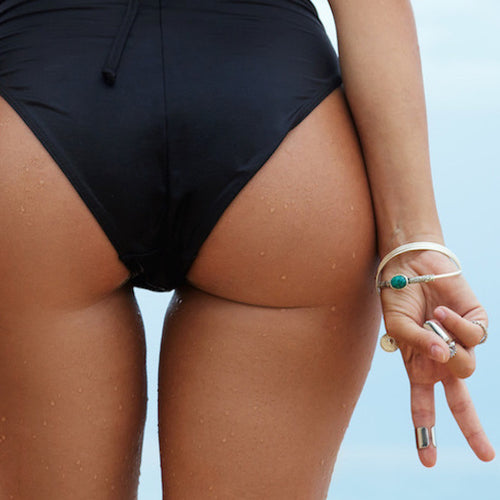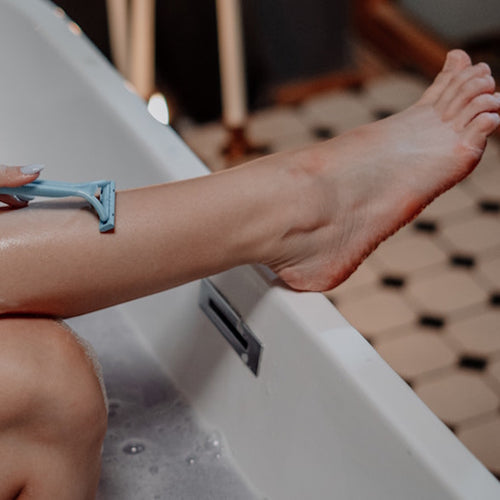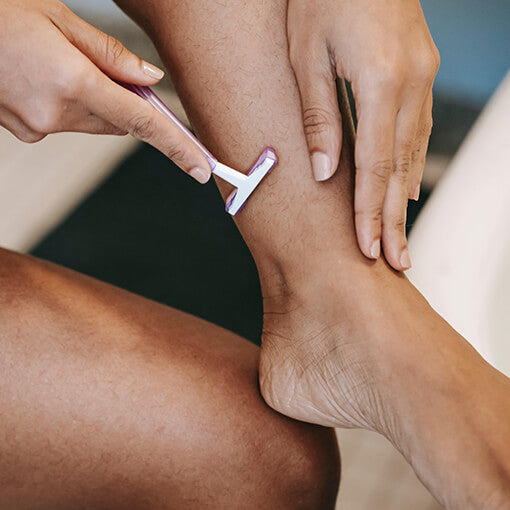
The Power of AHAs and BHAs for Treating Ingrown Hairs
Dr. Pimple Popper weighs in on the heated debate about the best way to treat and prevent ingrowns.Published:
4 minute read
Ingrown hairs are an unavoidable consequence of hair removal—but what’s the best way to manage them? While there’s a consensus that exfoliation is key, the debate rages on about which active ingredient is most effective.
So, which is better for preventing and treating ingrown hairs: alpha hydroxy acid (AHA) or beta hydroxy acid (BHA)? With the help of dermatologist and SLMD Skincare founder Sandra Lee, MD (aka Dr. Pimple Popper), let’s dive into the science and see which one comes out on top.
Article Quick Links
Understanding ingrown hairs
Ingrown hairs, also known as razor bumps, occur when hair curls back or grows sideways into the skin, leading to red, inflamed bumps. This issue is particularly common in people with curly hair but can affect anyone who removes hair by shaving, waxing, threading, or plucking.
Dr. Lee’s takeaway: To minimize ingrown hairs, consistent exfoliation is crucial as it helps prevent the skin from trapping hairs underneath.
AHA vs. BHA: which acid is best for ingrown hairs?
When it comes to chemical exfoliants, AHAs (like glycolic acid) and BHAs (like salicylic acid) are the go-to choices. But how do you choose between them?
- AHAs (glycolic acid): Water-soluble and primarily effective on the skin's surface, AHAs work by loosening the bonds between dead skin cells, allowing them to shed more easily. Glycolic acid, in particular, is known for its ability to exfoliate and brighten the skin, making it an excellent choice for addressing the surface-level issues that contribute to ingrown hairs.
- BHAs (salicylic acid): Oil-soluble and able to penetrate deeper into the pores, BHAs target the sebum and dead skin buildup within the pores, making them particularly effective for those with oily or acne-prone skin. Salicylic acid's anti-inflammatory properties also help calm the redness and irritation associated with ingrown hairs.
Dr. Lee’s takeaway: For most people, glycolic acid (AHA) is effective for treating ingrown hairs because it works on the skin's surface, where the hair is trapped. However, those with oily skin or who are prone to acne may also benefit from salicylic acid (BHA) due to its ability to clear out pores and reduce inflammation.
Dr. Pimple Popper's Ingrown Hair Solutions
How to incorporate AHAs and BHAs into your routine
While both AHAs and BHAs can be beneficial, combining them can provide a comprehensive approach to ingrown hair treatment. Here’s how to use them effectively:
- Start slowly: Begin using exfoliating products 2-3 times a week to allow your skin to adjust to the acids. Gradually increase frequency based on your skin’s tolerance to prevent irritation.
- Use a BHA exfoliant: Incorporate a BHA-based product, like a salicylic acid spray or cleanser, daily. This helps to clear out pores and reduce the chances of ingrown hairs forming, especially in areas prone to oil buildup.
- Add a body scrub: Use a physical exfoliant in the shower that also contains a chemical exfoliant, such as glycolic or salicylic acid. The physical scrub helps to manually remove dead skin cells, while the chemical exfoliant penetrates deeper to loosen any trapped hairs and further prevent ingrown hairs. Try: SLMD Glycolic Acid Body Scrub
- Apply leave-on AHAs: After your shower, apply an AHA toner, serum or lotion designed to be left on the skin. This continues the exfoliating process, and in the case of moisturizer, seals in hydration, and keeps the skin smooth and soft. Try: SLMD AHA/BHA Swipes, Glycolic Acid Body Lotion
- Use a spot treatment: For stubborn ingrown hairs or areas prone to ingrowns, consider using a spot treatment containing AHAs or BHAs. These targeted treatments can help to clear individual ingrown hairs more effectively and prevent new ones from forming. Try: SLMD SA Acne Spot Treatment
- Avoid over-exfoliating: While exfoliation is essential for preventing ingrown hairs, it’s important not to overdo it. Over-exfoliating can irritate the skin, weaken the skin barrier, and lead to increased sensitivity or even more ingrown hairs. Again, start slowly, and adjust based on how your skin responds.
Dr. Lee’s takeaway: Consistency is key when using chemical exfoliants. Regular use of both AHAs and BHAs can significantly reduce the occurrence of ingrown hairs. Go slow, and always follow with a good moisturizer to protect your skin barrier.
FAQ: Your ingrown hair treatment questions answered
Q: Can I use both AHAs and BHAs together for ingrown hairs?
A: Yes, you can use both, but it's essential to start slow to avoid over-exfoliation. For most people, alternating days or using one in the morning and the other at night works well.
Q: How often should I exfoliate to prevent ingrown hairs?
A: For most skin types, exfoliating 2-3 times a week is sufficient. However, depending on your skin's tolerance, you may increase frequency as needed.
Q: Is glycolic acid safe for sensitive skin prone to ingrowns?
A: Glycolic acid is generally safe for sensitive skin, but start with lower concentrations and less frequent applications to minimize irritation.

Dr. Lee's Last Word
Glycolic acid is one of my favorite active ingredients because it's a powerful exfoliant that's generally well-tolerated by all skin types. For those prone to ingrown hairs, combining glycolic acid with salicylic acid offers a balanced approach that helps smooth and soften skin.



